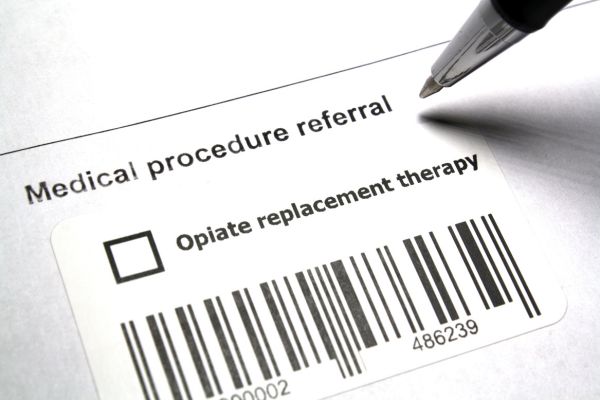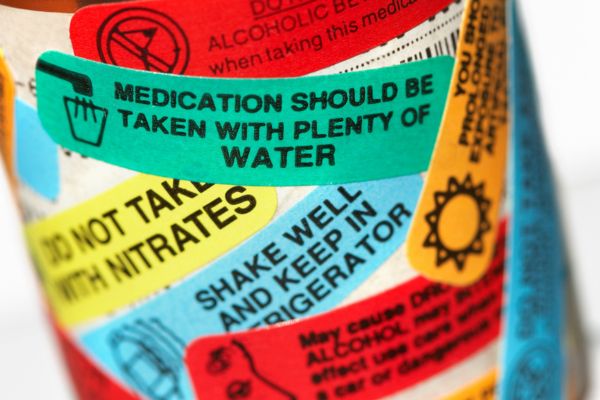Although buprenorphine-based medications, Suboxone and Subutex, are widely used as part of opioid addiction treatment (and are considered to be safe and effective), there are plenty of good reasons why someone would be interested in buprenorphine alternatives. Here are 3 other options that can be used instead.
Naltrexone
Naltrexone is the generic name for another FDA-approved medication used for the treatment of opioid addiction (Vivitrol is the brand name version). Unlike buprenorphine, Naltrexone is not an opioid. It’s an opioid antagonist like naloxone, the deterrent component in Suboxone, which blocks the effects of opioids.
Since it can’t occupy and activate opioid receptors in the brain, there’s no risk of naltrexone causing a high. That can be a double-edged sword since it also means that naltrexone can’t provide relief for opioid withdrawal symptoms. This medication is purely for disincentivizing relapse and is best suited for someone with less severe opioid addiction and who’s at a lower risk of relapse.
Methadone
Methadone is the predecessor to medications like Suboxone and Subutex, and was one of the first medications approved to treat opioid addiction. It’s a full opioid agonist (compared to buprenorphine’s partial opioid status) that’s powerful and long-lasting. This makes it highly effective for providing relief from opioid withdrawal symptoms but also gives it significantly higher misuse potential.
One benefit of methadone over a buprenorphine-based medication is that it does not require the patient to already be in a state of withdrawal, and it can be used at any time. Methadone can only be acquired through federally certified opioid treatment programs (OTPs).
Suboxone Alternatives
If you’re okay with using buprenorphine but instead looking for an alternative to Suboxone in particular, you’re in luck. Zubsolv is the brand name of another buprenorphine/naloxone combination. The primary difference is the form of the medicine: Suboxone is a film that’s dissolved under the tongue whereas Zubsolv is a tablet.
One benefit of this Suboxone alternative is for patients who require higher doses. Zubsolv is more bioavailable (more of the medicine is absorbed and used in the body), so it requires less of this medication to have the same effects as a larger dose of Suboxone.
Reasons Why You Might Want Buprenorphine Alternatives
Not all people will respond to medications the same way. Differences in physiological or mental health, diet, lifestyle, and a whole range of other factors will affect how a drug works in the body. Then there are differences in treatment preferences to consider, which can also vary based on individual circumstances and medical needs.
Side Effects
Some of the most common side effects of buprenorphine-based medications like Suboxone include tiredness, nausea, constipation, headache, and dizziness (but these occur in less than 10% of patients). Symptoms may be more severe in some individuals than others, especially if they have an opioid sensitivity, which could merit finding a different medication.
Allergies
It’s not common, but some people may be allergic to buprenorphine (or in the case of Suboxone, to the compound naloxone). Symptoms can include a rash, hives, and pruritus. Typically, a person allergic to buprenorphine is allergic to all opioids — so if you’ve never had a reaction before, you’re likely not at risk. Some of the more serious, but highly rare, symptoms can be trouble breathing (anaphylactic shock), low blood pressure, or loss of consciousness.
Concerns for risk of abuse
Though buprenorphine-based drugs are considered to be “safe”, it’s technically still an opioid and therefore has the potential to be abused, and in some cases, to even result in addiction.
Preferences in medication administration
Suboxone and other buprenorphine medications are typically taken sublingually as a thin film that’s dissolved under the tongue, or in tablets. However, different formulations such as long-acting injectable buprenorphine, oral tablets, or transdermal patches, may be a better fit based on a person’s medical history, lifestyle, or personal beliefs.
Co-occurring disorders
A person with a co-occurring disorder may be on one or multiple prescriptions and could potentially have adverse reactions when taken with buprenorphine medications. Some of the most common drugs known to have interactions with drugs like Suboxone include:
- Alcohol
- Antifungal medications, antibiotics, or antiretroviral drugs that affect the liver
- Antidepressants (particularly monoamine oxidase inhibitors)
- Antipsychotics
- Barbiturates or other sedatives
- Benzodiazepines
- Erythromycin
- Hormonal contraceptives
- Phenobarbital
- Rifampin
- HIV protease inhibitors
Plus, some medications may simply be better suited to managing both the addiction and the other medical needs simultaneously.
Ease of access
At the end of the day, what good is a medication that you can’t get your hands on? Accessibility is a major factor in the viability of using some medications over others. For instance, Suboxone is only available through specially licensed medical professionals, many of which are limited to specific clinics.
However, accessibility doesn’t just refer to the ability to physically get the medication but also cost. In some cases, certain medications might be more affordable or more readily available. A treatment option that’s always free and readily available is support groups like Narcotics Anonymous. Find an NA meeting near you today.









